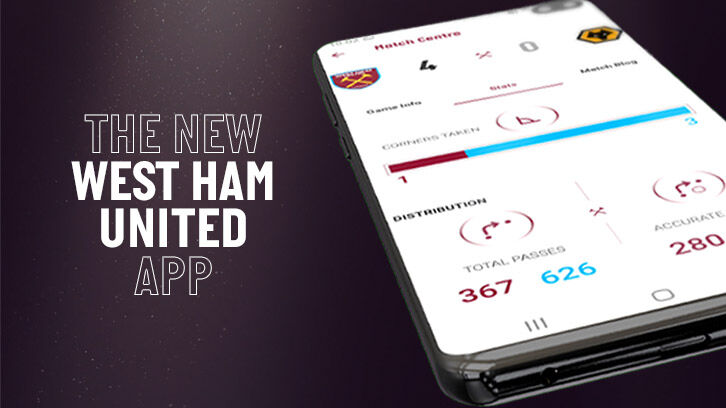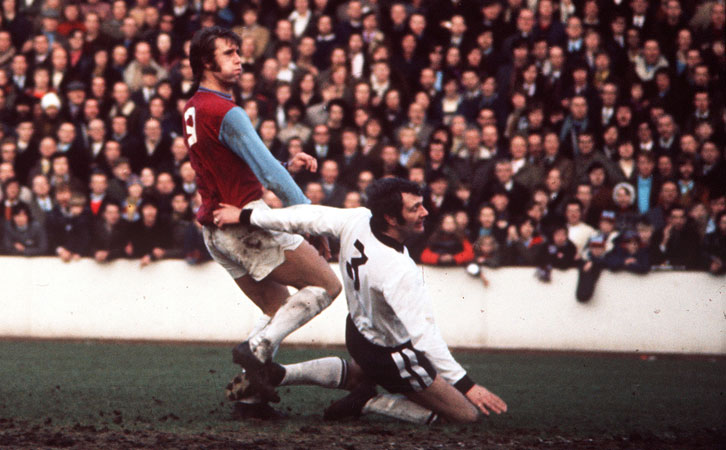
We continue our alphabetic journey through 125 years of West Ham United history with trips to two non-league clubs, the Hammer of the Year award and by meeting a diminutive winger…
Halifax Town
West Ham United faced Halifax Town AFC just once in the West Yorkshire club’s 97-year existence.
Formed in 1911, Halifax joined the Football League in 1921 and remained there for 72 years before being relegated. The Shaymen returned in 1998, before dropping out of the League again in 2002 and finally going out of existence in 2008.
The sole meeting between the two clubs occurred on 3 September 1969, when a Hammers side managed by Ron Greenwood and featuring Billy Bonds, Frank Lampard, Bobby Moore, Harry Redknapp, Martin Peters, Geoff Hurst and Clyde Best scored a 4-2 League Cup second-round win in front of 20,717 supporters at the Boleyn Ground.
Lampard and Best put the Irons 2-0 up at half-time before Ian Lawthor pulled a goal back. Hurst’s double made it 4-1 before Bob Wallace netted a late consolation.
Hurst was also booked after getting into an altercation with his marker Dave Lennard.
Hammer of the Year
A grand total of 42 players have been honoured with the Hammer of the Year award.
It was the beginning of the 1957/58 season and the members of the West Ham United Supporters’ Club wanted to recognise the outstanding player of the campaign with an official award.
The first recipient was defender Andy Malcolm, whose form helped Ted Fenton’s side to win the Division Two title on the final day of a memorable campaign.
West Ham would finish sixth in Division One the following season, 1958/59, with ever-present centre-back Ken Brown being named as the second Hammer of the Year. Winger Malcolm Musgrove would follow in 1960.
In 1961, a young Bobby Moore won the first of his four awards at the tender age of 20, while goalkeeper Lawrie Leslie became the first and, so far, only Scot to lift the trophy in 1962.
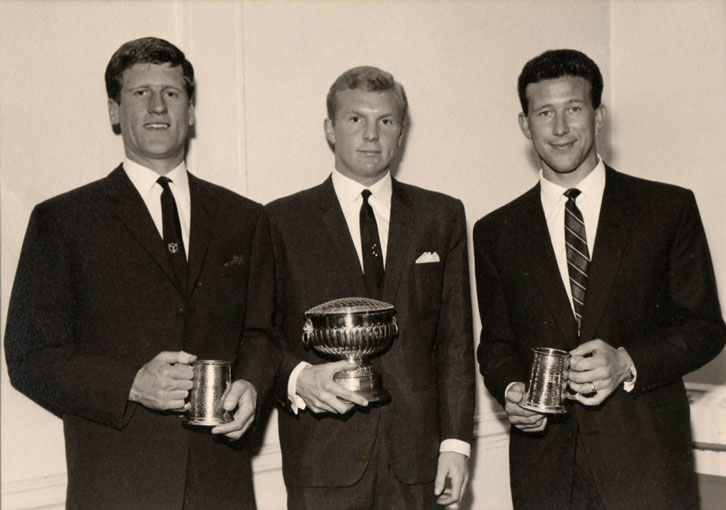
Moore won his second award in 1963 before picking up further recognition in 1968 and 1970 as West Ham enjoyed the most successful era in their history, winning the FA Cup in 1964, the European Cup Winners’ Cup in 1965 and reaching the League Cup final and providing three members of England’s FIFA World Cup-winning team in 1966, including captain Moore and both goalscorers in hat-trick hero Geoff Hurst and Martin Peters.
Indeed, after England striker John Byrne had won in 1964, the World Cup trio would monopolise the award for the remainder of the decade. Peters won in 1965, while Hurst did so in 1966, 1967 and 1969.
Billy Bonds was voted Hammer of the Year for the first time in 1971, picking up further trophies in 1974 and the FA Cup-winning year of 1975. Amazingly, Bonds would pick up his fourth award in 1987 at the age of 40.
The only man to have been named Hammer of the Year on five occasions is Trevor Brooking. After graduating from the Academy, Brooking won the FA Cup twice, scoring the winner as West Ham upset Arsenal in the 1980 final. In total, the England midfielder made 647 appearances, scoring 102 goals. Brooking was also honoured in 1972, 1976, 1977, 1978 and 1984, and voted runner-up in 1968, 1973 and 1982.

The late 1970s and 1980s saw a new batch of heroes emerge in the shape of mercurial midfielder Alan Devonshire and Academy graduates Alvin Martin, Paul Allen and Tony Cottee. Indeed, the only other non-homegrown stars to win the award during the 1980s were goalkeeper Phil Parkes in 1981 and former Arsenal midfielder Stewart Robson in 1988.
Following Paul Ince in 1989, left-back Julian Dicks emulated the achievements of Moore and Bonds by winning four times, in 1990, 1992, 1996 and 1997.
Ludek Miklosko became the first non-British winner in 1991, while United States-born Steve Potts is the only man to be named Hammer of the Year twice, in 1993 and 1995. In between, leading scorer Trevor Morley was honoured in 1994.
In recent decades, the title of Hammer of the Year has been shared around, with only three-time winner Scott Parker, who collected the trophy in 2009, 2010 and 2011, and Mark Noble, who won in 2012 and 2014, collecting multiple awards this century.
In the 23 years since Rio Ferdinand won in 1998, 20 different players have been crowned Hammer of the Year, including six members of the current first-team squad – Noble, Winston Reid, Aaron Cresswell, Michail Antonio, Lukasz Fabianski and Declan Rice.
Academy graduates Ferdinand and Joe Cole, in 2003, were interspersed by imported stars such as Trinidad and Tobago goalkeeper Shaka Hislop, Italian forward Paolo Di Canio, French full-back Sebastien Schemmel, while Argentina star Carlos Tevez was the recipient in 2007.
There has also been room for the veterans to shine, with Stuart Pearce and Teddy Sheringham both winning at the grand old age of 39.
Danny Gabbidon and Robert Green were honoured before Parker completed his hat-trick of awards, while Dimitri Payet and Marko Arnautovic both marked their brief stays in east London by winning the supporters’ acclaim before things turned sour.
Handbooks
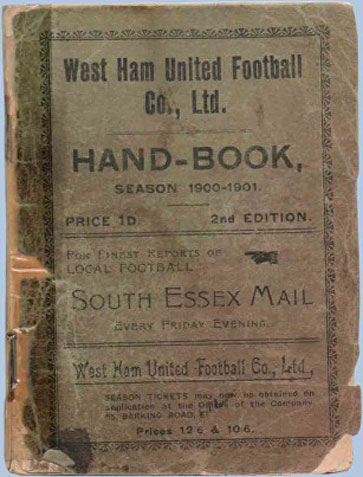
In the days long before the internet and social media and decades before radio and television broadcasting came into being, print media was the preferred means of communication.
Initially, news and match reports were published in the Ironworks Gazette, the works newspaper of the Thames Ironworks and Shipbuilding Company Limited.
In 1900, the Club was reformed as West Ham United and, at the end of the Hammers’ first season under its new identity, published its first Handbook.
The 1900/01 Handbook was priced at one penny and contained a Directors’ report, photographs of the players and officials, a look back at the season gone by, on and off the pitch, and plenty of adverts placed by local businesses.
In the 1920s and 1930s, there were detailed reports of the Club’s first overseas tours to Spain, Germany, the Netherlands, Denmark and Sweden.
Handbooks were published up until the 1938/39 season before being suspended during and immediately after Second World War.
The Club resumed publication in 1954/55 before handing responsibility for the Handbook over to the Supporters’ Club the following decade.
Official Programme editor and printer and Club historian Jack Helliar took over publication for many years, with the final Handbook being produced for the unforgettable 2006/07 season, which climaxed in the Great Escape from Premier League relegation.
Hereford United
West Ham United faced Hereford United on four occasions in the space of two years in the early 1970s.
The two clubs were drawn together in the fourth round in 1971/72, drawing 0-0 at Edgar Street.
With a huge 42,271-strong crowd inside the Boleyn Ground and hundreds more watching from the roof of the nearby Priory Court, the top-flight Hammers outclassed their Southern League Premier Division opponents 3-1 in the replay, with Geoff Hurst scoring a hat-trick.
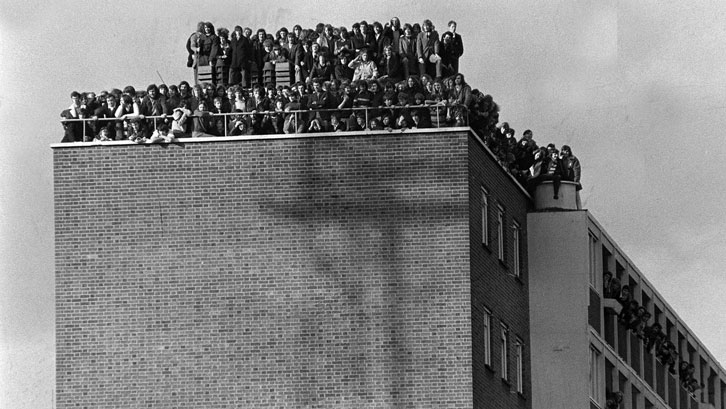
Two seasons later, on 5 January 1974, the pair squared-off again, this time in the third round, by which time Hereford had won election to the Football League and promotion to the Third Division.
The initial tie ended 1-1 at the Boleyn Ground and turned out to be Bobby Moore’s 647th and last game for the Club.
The great captain was injured after 30 minutes replaced by substitute Pat Holland, who later scored West Ham’s goal.
Four days later, West Ham travelled to Edgar Street without Moore and lost 2-1.
Harry Hooper
Born on 14 June 1933 in Pittington, County Durham, Harry Hooper joined West Ham United at the age of 17 in November 1950, when his father Harry Sr – a former professional with Sheffield United and Hartlepool – was appointed Assistant Trainer at Upton Park by Ted Fenton.
Young Hooper made his senior debut just three months later in a 4-2 Division Two win over Barnsley on 3 February 1951 and scored his first league goal for the Club the following month in a 1-1 draw with Swansea Town.
It was the first of 44 goals in 131 first-team appearances over the course of the next five years – an impressive return for a left winger who became a huge favourite with the Hammers fans thanks to his electric pace, skill and eye for goal.
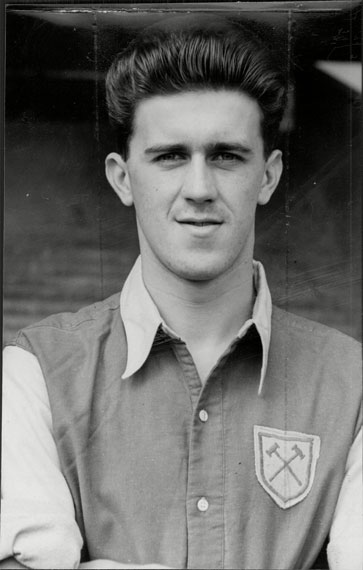
He netted two goals in a match on no fewer than four occasions, while his sole hat-trick in a Hammers shirt came in the 6-1 Division Two victory over Doncaster Rovers in October 1955.
Along with the likes of Malcolm Allison, Noel Cantwell, John Bond, Frank O’Farrell and John Dick, he became a key figure in the famed group of players who created the ‘Academy of Football’ vision that ultimately led to promotion to the top flight in 1958.
An England U23 and B international, he was also named on the standby list of players for the 1954 FIFA World Cup in Switzerland – an outstanding achievement for player with a Division Two club.
Hooper also earned a reputation as a popular and likeable character off the field, whose commitment to the Club was never in doubt. On 5 March 1955, he played in a Division Two match against Leeds United – on the day of his wedding! He was made captain for the day and Ted Fenton’s men ran out 2-1 winners.
Hooper made his final appearance for the Hammers in March 1956, scoring in a 3-2 win over Bury, before joining Wolverhampton Wanderers for £25,000 just a few days later. The funds were used by the Club to buy land from St Edward’s school adjacent to the Boleyn Ground, which later became the main car park at the stadium.
After one season at Molineux, Hooper joined Birmingham City and spent three years at St Andrews, winning a runners-up medal in the 1960 European Fairs Cup, scoring a consolation goal in a 4-1 defeat to Barcelona in the final.
He later enjoyed spells with Sunderland, Kettering and Dunstable Town before hanging up his boots and working for an electronics firm in Bedford until his retirement. He moved to West Mersea in Essex, then to Hunstanton, where he was cared for in the final years of his life by his family and the wonderful staff at the Somerset Villa Care Home, who looked after him with such love and compassion.
Hooper kept in touch with the Club and many of his old team-mates in his later years and, fittingly, made his last visit to Upton Park for the Farewell Boleyn match against Manchester United in May 2016.
He passed away in August 2020 at the age of 87, in Hunstanton, Norfolk, following a long and brave battle with Alzheimer’s.
